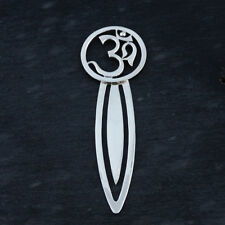
Hindu Om Symbol: Meaning and Significance
The Om symbol, also known as the Aum symbol, is one of the most sacred and significant symbols in Hinduism. It is a representation of the infinite and eternal nature of the universe. In this article, we will delve into the meaning and significance of the Om symbol from various dimensions, including its spiritual, cultural, and historical aspects.
Spiritual Significance

The Om symbol is considered to be the sound of the universe. It is believed to be the primordial sound from which all other sounds arise. In Hindu philosophy, the Om symbol represents the four stages of life: creation, preservation, destruction, and transformation. It is also associated with the four Vedas, the sacred scriptures of Hinduism.
From a spiritual perspective, the Om symbol is considered to be a powerful mantra. It is believed that reciting the Om mantra can bring peace, tranquility, and enlightenment. The sound of Om is said to have the power to purify the mind and soul, and to connect the individual with the divine.
Cultural Significance

The Om symbol is not only significant in Hinduism but also in other religions and cultures. It is a symbol of peace and unity, and is often used in meditation and yoga practices. In India, the Om symbol is widely used in art, architecture, and everyday life.
In Hindu temples, the Om symbol is often found in the form of a mandala, which is a geometric representation of the universe. It is also used in the construction of temples, with the Om symbol being incorporated into the architecture and design.
Historical Significance

The Om symbol has a long and rich history. It is believed to have originated in the Vedic period, around 1500-500 BCE. The symbol has been found in various forms in ancient texts, artifacts, and sculptures.
One of the earliest known representations of the Om symbol is found in the Rigveda, one of the oldest sacred texts of Hinduism. The symbol has also been found in the Brahmanas, the Upanishads, and other ancient texts.
| Period | Representation of Om Symbol |
|---|---|
| Vedic Period (1500-500 BCE) | Found in Rigveda and Brahmanas |
| Mauryan Period (322-185 BCE) | Found in Ashoka’s Edicts |
| Gupta Period (320-550 CE) | Found in Buddhist and Hindu Art |
Symbolism and Interpretation
The Om symbol is a complex and multi-layered symbol, with various interpretations and meanings. Here are some of the key aspects of its symbolism:
-
The three curves of the Om symbol represent the three states of consciousness: waking, dreaming, and deep sleep.
-
The dot at the top of the Om symbol represents the absolute reality, the ultimate truth, and the divine.
-
The sound of Om is believed to be the sound of the universe, and is considered to be the source of all sounds.
-
The Om symbol is also associated with the five elements: earth, water, fire, air, and space.
Conclusion
The Om symbol is a powerful and significant symbol in Hinduism, with deep spiritual, cultural, and historical roots. Its meaning and significance are vast and multifaceted, and it continues to be a source of inspiration and enlightenment for millions of people around the world.




